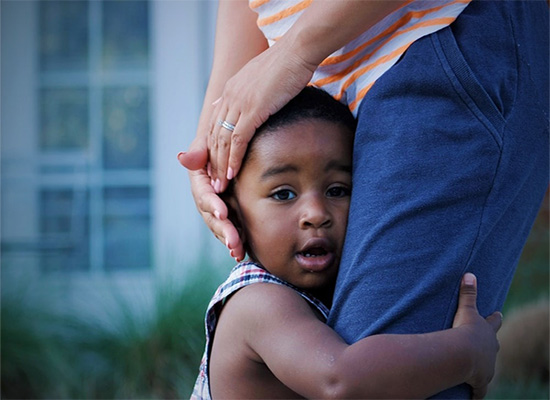The phrase “leave me alone” is common with children of this generation. They usually use this phrase when a person bothers them and won’t leave them alone or a peer or sibling repeatedly annoying them. It may seem impolite at times, but it is one of the numerous phrases that shows that your child can stand up for themself.
As a parent, one of the most essential life skills you can teach your child is how to stand up for themselves.
This can be a challenging task, especially for young children who may struggle to express their feelings and needs.
However, with your guidance, your child can develop the confidence and assertiveness they need to navigate a wide range of social situations.
In this article, we’ll delve into 20 empowering phrases that can equip your child to stand up for themselves.
These phrases are not just words, they are tools designed to be simple, clear, and effective.
They can be used in a variety of situations, from dealing with bullies and teasing to setting boundaries.
By understanding and practicing these phrases, you can empower your child to navigate social situations with confidence and assertiveness.
Why Teaching Your Child To Stand Up for Themselves is Important
Teaching your child to stand up for themselves is essential for their social well-being. It will help them feel confident and able to express their needs and feelings as they grow.
Conversely, children who struggle to stand up for themselves may feel powerless, anxious, and vulnerable to bullying and exploitation.
By teaching your children the skills they need to assert themselves, you can help them develop the resilience and confidence they need to thrive in all areas of life.
Therefore, here are 20 assertive phrases that can help your child stand up for themselves:
1. I can do it myself.
2. Please stop doing that.
3. I’m not comfortable with this.
4. No, I don’t want to.
5. I need some space.
6. That’s not okay with me.
7. I’m not going to do that.
8. Stop teasing me.
9. I’m feeling hurt by your words.
10. I deserve respect.
11. No means no.
12. I’m not afraid of you.
13. Leave me alone.
14. I don’t like it when you talk to me like that.
15. I don’t need your help.
16. That’s my property; please don’t touch it.
17. I’m not going to fight with you.
18. I want to be treated fairly.
19. You’re being mean.
20. I’m not going to tolerate this behaviour.
1. “I Can Do It myself”
“When someone is trying to do something for them that they’re capable of doing themselves or a person or authority figure is not giving them the autonomy they need, they can politely say, “I can do it myself.”
2. “Please Stop Doing That”
This can be used when someone is physically bothering them, like poking or pushing. A peer is taking their belongings without permission.
3. ”I’m Not Comfortable With That”
This suffixes when someone asks them to do something they don’t feel right about, such as when a peer is trying to convince them to engage in behaviour that makes them uneasy.
4. “No, I Don’t Want To”
For instance, someone is asking them to do something they don’t want to do, or a peer is trying to persuade them to join a game or activity they’re not interested in.
5. ”I Need Some Space”
An example is when they feel overwhelmed or crowded by someone. A peer or sibling is not giving them enough personal space.
6. “That’s Not Okay With Me”
This may be used when someone is doing something that they don’t agree with or a peer is trying to convince them to do something that goes against their values.
7. “I’m Not Going To Do That”
This is when someone asks them to do something they don’t want to or when a peer tries to pressure them into doing something they’re uncomfortable with.
8. “Stop Teasing me”
This suffixes when someone is teasing them in a mean-spirited way or when a peer or sibling is repeatedly making fun of them.
9. “I’m Feeling Hurt By Your Words.”
This can be used when someone has said something hurtful or mean to them and if a peer or sibling has used hurtful language.
10. “I Deserve Respect”
Is someone treating your child disrespectfully? A peer or authority figure is not listening to their needs or opinions? Then, teach them the above phrase in a polite way.
11. “No Means No”
Is someone taking their “no” for an answer? A peer is trying to pressure them into doing something they’ve already said no to. Their no means no!
12. “I’m Not Afraid Of You”
This can be used when a person is trying to intimidate or bully them or if a peer or sibling is trying to scare them.
13. “Leave Me Alone”
This is more common with children of this generation anyway. When a person bothers them and won’t leave them alone, or a peer or sibling repeatedly annoys them, they usually use this phrase.
14. “I Don’t Like It When You Talk To Me Like That.”
This can be used when someone speaks to your child in a mean or condescending tone or when a peer or sibling uses hurtful language.
15. “I Don’t Need Your Help.”
If someone is trying to help them with something they don’t need help with or an authority figure is overly controlling, they can politely use this phrase.
16. “That’s My Property, Please Don’t Touch It.”
This phrase is necessary when someone takes or touches one’s belongings without permission, such as when a peer or sibling plays with their toys without asking.
17. “I’m Not Going To Fight With You”
Someone is trying to provoke them into a fight. A peer or sibling is being aggressive or confrontational.
18. “I Want To Be Treated Fairly”
This is when your child feels like they’re being treated unfairly or unjustly. And a person or authority figure is not being fair or consistent.
19. “You’re Being Mean”
Is someone intentionally hurtful or cruel, or is a sibling using mean language or behaviour toward your child? This phrase fits in.
20. “I’m Not Going To Tolerate This Behaviour”
This suffixes when a person or group engages in unacceptable or hurtful behaviour or when an authority figure does not respect their boundaries.
Have You Read: Age Groups Activities: What Should I Teach My 1 2 3 4 5-year-old?
Here are some tips for teaching your child to stand up for themselves:
– Start early: Teach your child assertiveness skills from a young age.
– Practice, practice, practice: Role-play different social scenarios with your child to help them practice their assertiveness skills.
– Encourage self-expression: Encourage your child to express their feelings and needs clearly and respectfully.
– Model assertive behaviour: Children learn from what they see, so make sure you’re modelling assertive behaviour yourself.
In conclusion, teaching your child the skills they need to stand up for themselves helps them develop the confidence and resilience they need to thrive in all areas of life. Remember to start early, practice regularly, and offer support and encouragement.




